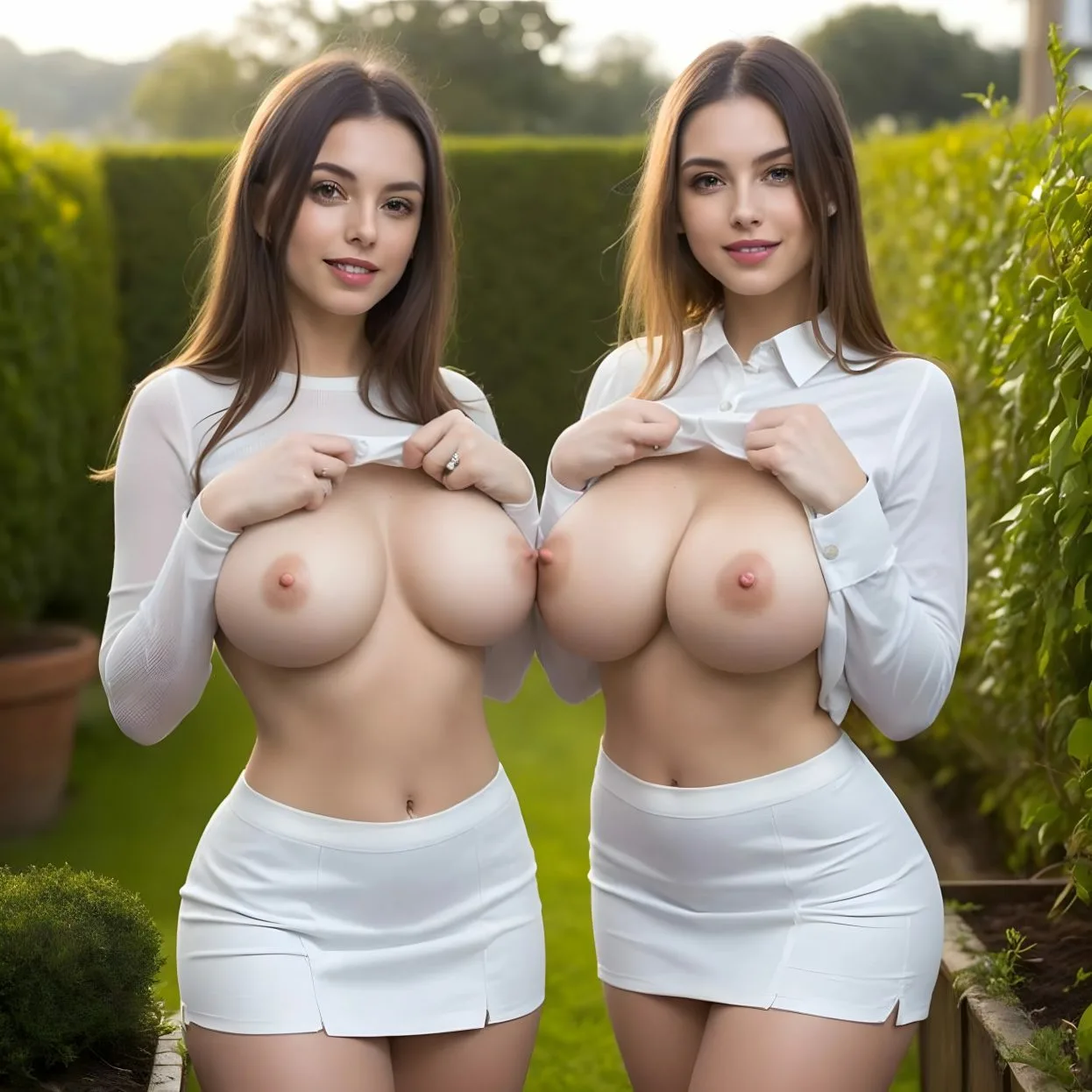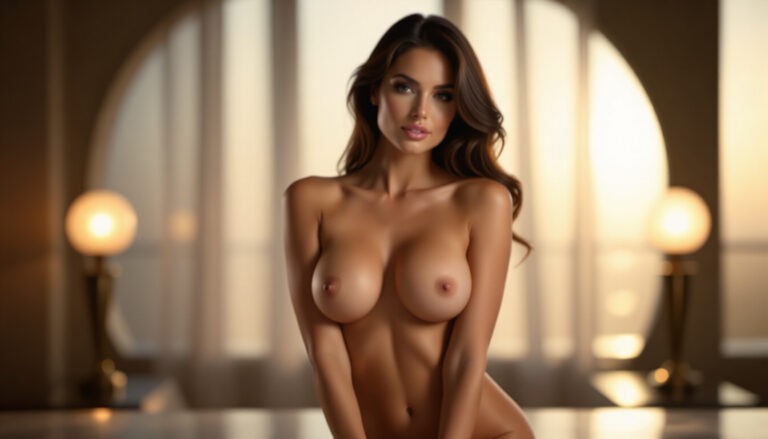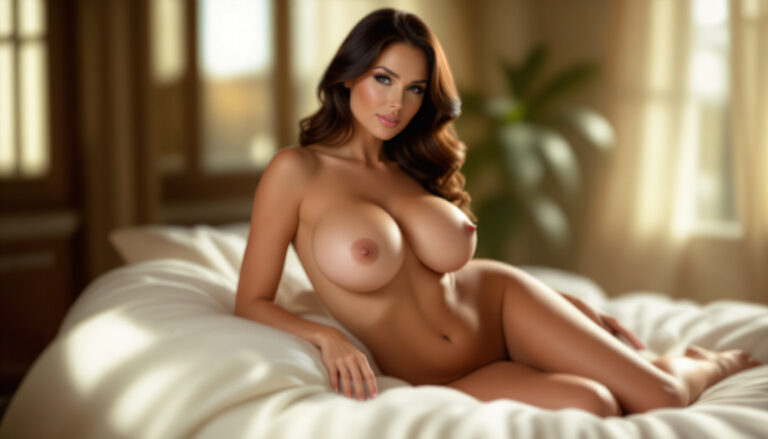AI Big Boobs Bouncing Porn Generator Images

Generate AI Content for Free
Explore AI-powered content generation tools with free access to unique experiences. Create personalized results effortlessly using cutting-edge technology.
TRY FOR FREEPeople aren’t just typing dirty words into search bars anymore. They’re typing whole fantasies. Curiosity about how AI can stretch, animate, and exaggerate the human form—especially the female body—isn’t just peaking, it’s reshaping how we think about erotic content. What a lot of folks actually want to know is: how are these hyper-exaggerated, bouncing-boob images even made? Who’s generating them? And why are they suddenly everywhere?
While this might feel like digital chaos on the surface, underneath it all is a real shift: users want agency. They’re not looking for old-school porn. They want fantasy on their terms—custom-tailored, anonymous, perhaps even emotionally detached. It’s less about watching, and more about crafting. And the option to crank sliders for size, angle, animation, and vibe offers a new layer of control. Think virtual paper dolls, but NSFW, responsive, and coded from top to bottom in fantasy.
Demand is being driven by more than just straight-male libido. Behind the curve, you’ll find taboo curiosity, kink exploration, queer content chasers, and digital artists hungry for raw assets. With AI-powered porn, the old line between creator and consumer gets blurry—and that’s exactly the appeal.
Understanding The Rise Of AI-Generated Erotic Content
Ask around in adult content spaces or erotic AI forums, and you’ll start hearing similar threads: people are less interested in traditional pornography and more intrigued by digital fantasy they control. When users search for things like “AI big boobs bouncing images,” it’s often not just about sex. It’s about the tech. Curiosity drives traffic: Can an algorithm really capture gravity, softness, bounce physics?
It also scratches a specific itch: exaggerated proportions, camera-ready smoothness, and looped motion—all without the flaws or boundaries of real-life material. Some just want cartoon-styled figures with physics-defying curves. Others want realism injected with the wild freedom of an anime cosplay dream.
But the customization is what seals it. People can manipulate not just what they see, but how it moves. AI tools let them dive into micro-control: nipple size, skin reflection, jiggle pattern, underwear elasticity, even corset tightness. And it’s mostly hands-off—users don’t need art skills, 3D animation chops, or human collaborators.
This shift toward hyper-personalized erotica ties tightly into broader cultural signals:
- Desire for total privacy: no partner, no DM, no chat history to hide.
- Masc-powered exploration: for some, this is kink discovery without the vulnerability of doing it with another person.
- Taboo testing ground: what was once too weird or shameful to search for now has a pixel-born outlet.
The result? An emergent visual language of eroticism that pushes what bodies mean and where sexual imagination can go—no actors required.
The Technology That Powers Exaggerated Bodies And Bouncing Motion
Flip the hood and what powers these NSFW animations is a complex web of text prompts, model training, and post-processing filters. Generators like Stable Diffusion, NovelAI, and less-regulated forks allow prompt-based image creation with processed layers for lighting, shadows, and ‘bounce’ approximation. It’s fast and increasingly high-def.
Unlike hand-drawn animation or traditional video where every frame had to be rigged, modern AI tools use suggestions like “hyperbreast,” “jiggle physics,” or “dynamic bounce animation” to summon entire visuals from scratch. Some advanced users even combine image-gen with 3D model rigs or physics sims, but most rely on keyword-fed models.
Here’s what’s typically going on behind the scenes:
| Function | Tech Detail |
|---|---|
| Image Input | User composes a descriptive prompt (“gigantic bouncing chest in lingerie, soft lighting”) |
| Diffusion Models | Engines like Stable Diffusion resample noise toward that final image goal, based on the prompt and model checkpoint |
| NSFW Checkpoints | Custom datasets trained specifically on erotic, fetish, or adult-themed content to improve anatomical exaggeration |
| LoRA Add-ons | Fine-tune motion or character attributes—can amplify curves, boost detail, or overwrite body types instantly |
| Prompt Refinement | Users insert “negative weight” terms to avoid unwanted outcomes like stretched limbs or wrong poses |
Reddit threads, Discord groups, and adult-themed Git repositories are flush with new methods, testing prompts, LoRA merges, and performance metrics. For some, it’s just fun. For others, it’s becoming semi-professional—especially in the creator economy.
Consumption Patterns And Who’s Driving It
The bulk of the user base skews male, age 18 to 40. But the gender binary isn’t holding firm. Queer users, femme tinkerers, neurodivergent folks exploring kink constructs—all are becoming quite active in AI erotica circles. With time, diversity in demand is pushing output variation.
It’s not just for masturbation either. AI erotic content creation has become a resource tool for:
- Adult comic artists generating base panels or visual guides
- Niche game developers populating character assets
- Erotic writers commissioning visual avatars of their characters
A lot of this plays out across platforms like Pixiv, DeviantArt, and newer AI-specific forums. Some creators offer exclusive content through Patreon or private Discord groups where photo sets, prompt files, and LoRA mods are traded or sold.
Why are people sticking with this? It speaks to control. Building the fantasy pixel-by-pixel means never having to deal with shame, rejection, or misalignment. AI doesn’t say no. It doesn’t ghost. And it doesn’t judge if someone’s idea of a turn-on involves latex armor, bouncing physics, and a glowing sword strapped to a breastplate.
At a deeper level, it’s about rewriting the rules of sexual exploration—privately, creatively, and at a distance from traditional power dynamics.
Prompt Culture and the Art of Erotic Precision
Why are people spending hours crafting the “perfect” fake image of bouncing breasts that don’t exist? Because it’s not just porn anymore—it’s personal. These AI generators are more than tools; they’ve turned visual kink-building into a kind of pixelated intimacy with yourself.
Experimenting with prompts becomes erotic craftsmanship. With tricks like prompt stacking—layering detailed textual commands—users squeeze insane textures and surreal realism from simple interfaces. One prompt might define curvature, another adjusts lighting, another animates bounce in real time. It’s like coding a fantasy.
This has spawned whole subcultures online. Forums where users share tweaks, give feedback like art critiques, and remix others’ prompts. Sometimes it’s collaborative, sometimes obsessively competitive. People don’t just generate images—they build personas out of pixels.
What’s wild? The emotional intimacy embedded in it all. One user might spend days adjusting bounce lag to recreate a childhood cartoon crush’s movement pattern. Another carves out their ideal of “perfect breast physics,” layering animation styles until it looks and feels right—not for others, for them.
For many, it’s not about shock or sex—it’s about designing someone who will never say no. It’s the dopamine hit of co-creating the ultimate, unjudging femme form. An unrejecting goddess filtered through code and lust, born from fragments of desire stitched together by prompts.
Ethics: The Legal Gray Zones and Moral Red Flags
Here’s the dilemma: these images aren’t “real,” but the people they resemble might be. One moment you’re tweaking anime bounce. The next, you’re looking at a synthetic version of a real woman’s face grafted onto fantasy flesh. Some users steal celebrity likenesses or even exes—deepfake territory without labeling or consent.
Don’t think that the underground is small. There’s a network of black-market models capable of replicating real people’s faces and bodies with stunning accuracy. No one asked their permission—and good luck taking it down from a rogue server in another country.
So far, there’s no real watchdog. Platforms either lean into freedom or slap on weak “consent filters” that barely stop anyone. And when fantasies drift into the extreme—like age regressions or non-consensual setups—it’s hard to know what crosses the line legally when it’s just pixels.
- Borrowed art styles from mainstream illustrators? Still common.
- AI models trained on pirated content then sold without credits?
- Generated porn resold as “custom commissions,” cutting out the tech creators entirely?
There’s a whole economy growing with no contracts, no accountability, and almost no limits. It’s a landslide of novelty propped up on shaky ethics. The question remains: when does creation become exploitation—especially when it feels good?
The Harm in Representation Gaps
A lot of these tools default to one thing: white, cis, thin, and disproportionately busty. When most AI generators rely on visual datasets scraped from biased or hyper-sexualized media, that’s what comes out the other end. And users, knowingly or not, repeat those patterns.
When you train tech to spit out “fantasy girls,” and 98% of them look identical, there’s fallout. Body diversity takes a backseat. Real people start measuring themselves against artifice. And every low-rated prompt becomes a quiet vote against someone’s body type.
What gets popular sticks. Prompt sharing platforms and subreddits push the same breast physics settings, same skin tone, same “ideal” face. One user nails the prompt and fifty copy it. It’s a homogenized feed. The Tumblrization of AI breast content isn’t theoretical—it’s happening right now.
This echo chamber leads somewhere: obsession. Some users spiral into full-on addiction to fantasy models they built themselves. Others lose interest in human partners who don’t bounce on cue. It becomes a loop where real intimacy feels messier and less rewarding than the perfectly engineered libido drip from the screen.
And for younger users or those recovering from body image issues? This trend can wreck confidence. People wonder why their bodies don’t move like the bouncing breasts in their prompts, forgetting those aren’t natural—they’re stitched-together composites bent to obey.
These gaps in representation aren’t aesthetic oversights. They impact how people feel, date, and see themselves. When the dream becomes the standard, a lot of real bodies get left behind.
Best Free AI Tools







